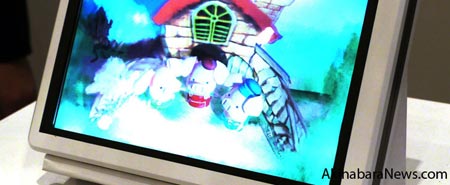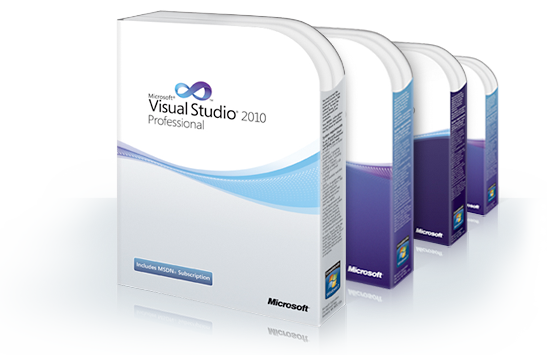 |
||
|
||
| ||
Sharp Readies 3D LCD That Doesn't Require Glasses Sharp Develops the World's First Four-Primary-Color 3D LCD Microsoft Visual Studio 2010 and Microsoft .NET Framework 4 Available
Sharp Readies 3D LCD That Doesn't Require Glasses Early this month, Sharp introduced 3D LCD displays for PDAs that didn't require special glasses. Today, the company showed another product of this series, a 10.1-inch panel aimed at e-book readers, tablet PCs and netbooks which can also be equipped with a touch panel.   Unfortunately, Sharp didn't provide any information on when such devices may go on sale. Source: Akihabara News Sharp Develops the World's First Four-Primary-Color 3D LCD Sharp Corporation has developed the world's first four-primary-color 3D LCD featuring the industry's highest brightness with extremely low crosstalk (undesirable double-contour "ghost" images). In general, 3D LCDs use a system based on time-sequential display technology with special active LC (liquid crystal) shutter glasses. In this system, images intended for the left and right eye are displayed on the LCD screen sequentially, alternating between the two perspectives. The LC shutters in the special 3D glasses are synchronized with this display, "opening" (becoming transparent) and "closing" (becoming opaque) in such a way that the left and right eye see separate images. The human brain combines these two slightly different images to create the perception of depth in a three-dimensional image. However, displaying 3D images on a conventional display using this system suffered from low brightness and crosstalk. The newly developed 3D LCD by Sharp offers a radical new solution to the above problems by combining four of Sharp's unique, one-of-a-kind LCD technologies, including (1) UV2A technology (Ultraviolet-induced multi-domain Vertical Alignment), Sharp's core technology for LCD TV panels, (2) four-primary-color technology (a multi-primary color technology that renders the red, green, blue video input signals on an LCD having four color pixels in which yellow is added), (3) FRED signal processing technology (Frame Rate Enhanced Driving, and (4) side-mount scanning LED backlight technology (reduces crosstalk). This LCD is optimized for 3D TV, as screen brightness when displaying 3D images is 1.8 times higher than that of the conventional displays, and crosstalk is very low. Sharp's four-primary-color technology utilizes four primary colors, adding yellow to the three conventional primary colors of red, green, and blue. This technology contributes to brighter, more vivid colors thanks to higher light transmission efficiency through the panel and a wider color gamut (range of colors that can be reproduced), which had been difficult to attain on conventional three primary color displays. Source: Sharp Corporation Microsoft Visual Studio 2010 and Microsoft .NET Framework 4 Available Microsoft announced the general availability of Visual Studio 2010 and .NET Framework 4. The company also announced that Silverlight 4 will release to Web (RTW) later in the week. Developers will be able to download Visual Studio 2010 and .NET Framework 4 in conjunction with the Microsoft Visual Studio Conference & Expo launch event in Las Vegas. Visual Studio 2010 comes in four editions:
 Visual Studio 2010 and .NET Framework 4 have something for every developer. The new editor, now using Windows Presentation Foundation, delivers a more flexible, feature-rich environment that supports concepts such as the use of multiple monitors. This enables a developer to have one monitor with code, another with the user interface designer, and yet another with database structure. With support for the latest Microsoft releases, developers can use their existing skills to create more types of applications than ever. Built-in support for Windows 7 multitouch and "ribbon" interfaces delivers stunning applications to end users. For the first time, developers have integrated access to SharePoint functionality into the Visual Studio integrated development environment. Windows Azure tools make it easy to quickly develop, debug, test and deploy cloud applications from within the familiar Visual Studio environment. Built-in support for ASP.NET Model-View-Controller gives developers the flexibility to separately update the appearance and core business logic of Web applications. Windows Phone 7 developers will be able to build mobile applications using Visual Studio with integrated phone design surfaces. Silverlight 4 creates a whole new way to deliver applications that run inside and outside the browser. To address the growing complexity of software development, Visual Studio 2010 provides powerful tools for the entire team. IntelliTrace, a "time machine" for developers and testers, makes nonreproducible bugs virtually a thing of the past by recording the application's execution history and providing reproduction of the reported bug, enabling the tester to help squash the bug once and for all. .NET Framework 4 adds additional support for industry standards, more language choice, new support for high-performance middle-tier applications including parallel programming, and side-by-side installation with .NET Framework 3.5. With the .NET Framework 4 Client Profile, the size of the runtime has been decreased by over 80 percent, making it easier for developers to get applications, and therefore users, up and running faster. Silverlight 4, which will RTW later this week, offers powerful media and business application capabilities that enable developers to deliver compelling application experiences on or off the Web. New features in Silverlight 4 include extended out-of-browser capabilities, enhancements for enterprise application developers, and more than 60 customizable pre-written controls to quickly build rich, interactive applications. Source: Microsoft
Write a comment below. No registration needed!
|
Platform · Video · Multimedia · Mobile · Other || About us & Privacy policy · Twitter · Facebook Copyright © Byrds Research & Publishing, Ltd., 1997–2011. All rights reserved. |